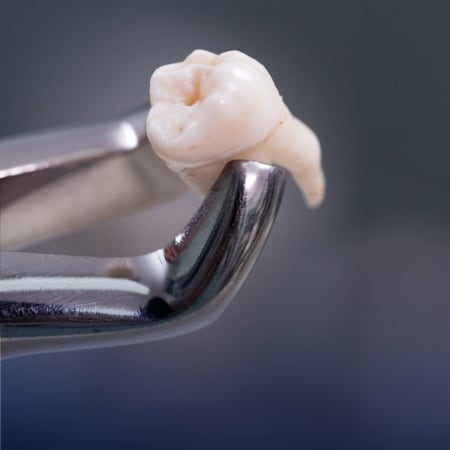As long as there has been a dental industry, there have been people trying to sell products and services to those of us within the dental industry.
The frequency at which salespeople have come knocking on our door has only increased since the industry began ramping up earlier this summer.
As a practice, CVOS has been fortunate to have built some strong positive relationships with our vendors, based on mutual trust and respect. This means that when a sales rep presents his or her product or service to us, I can trust that it is because they truly believe our practice will benefit in some way.
The question is, however, will it benefit enough and in the right way?
In other words, I must take the information presented and critically assess if the purchase is worth it.
The Movie Trailer Vs. The Feature Length Film
Have you ever gone to see a movie because the movie’s trailer got you excited about the film? Have you ever left the theatre feeling disappointed after seeing this movie because the best parts of it were those few seconds shown in the movie’s trailer?
This is the trap that many fall into when assessing the benefit that a new piece of equipment or software will provide to their practice.
Sales representatives are very skilled at presenting their wares in a way that encourages a prospective customer to buy.
Terms such as “efficiency” and “return on investment” are constantly used to establish the efficacy of the solution being presented.
By the end of the sales pitch, you are left with the feeling that this purchase “just makes sense”.
But does it?
What has been presented to you will very likely benefit your practice in some way…but are the benefits presented the whole feature-length film or just the 30-second trailer?
3 Often Overlooked Factors
Too often, basic financial measures (ROI, input cost, etc.) are used as the primary decision-making tools of an investment when in fact, they can only provide a one dimensional perspective.
Other criteria that must be considered, but are often overlooked, examine whether a purchase or investment supports your strategic direction, accounts for potential trade-offs, and if the anticipated efficiencies can actually occur.
Strategic Cost Assessment
The first overlooked factor to consider when assessing the potential benefit of a good or service is whether that good or service clearly supports your practice’s strategic plan.
While “strategy” gets thrown around a lot, a strategy is merely the identification of the trade-offs you will employ. Your strategic plan is a road map of how all of your identified trade-offs will work together to allow you to achieve some big, lofty goal.
CVOS follows the methodology of strategic cost management, whereby we review all of our costs periodically to ensure we consistently reduce or eliminate any cost that doesn’t support our strategic plan and the achievement of our big, lofty goal.
This process also applies to capital purchases such as new equipment and operational costs such as outsourced services.
If a purchase isn’t strategic in nature, is it really needed?
Opportunity Costs
The second overlooked factor to consider has to do with the afore mentioned trade-offs.
Cash is a fixed resource. When you choose to trade cash (or credit) for a good or service, you have less to spend elsewhere.
The best forgone alternative for the cash you decide to spend is called “opportunity cost”.
An example would be that if you decide to purchase a new piece of equipment for $50,000, but the trade-off is not being able to hire the extra staff person you need to run your office. In this case, the opportunity cost (or what you will be giving up) is the economic value of the foregone improvements in productivity, patient satisfaction, and workflow that may result from hiring that additional staff person.
As a practice owner, the question to consider is: knowing what the opportunity costs are of a potential purchase, is it still worth it?
False Efficiency
The third overlooked factor is more of a concept called “false efficiency”.
“Efficiency” is also a term that is often used incorrectly.
Efficiency goes hand-in-hand with productivity. Productivity is simply a measure of how much output your practice receives per unit of input.
Efficiency, then, is a relative measure used to assess the amount of inputs needed to achieve a desired level of output. Being “efficient” means that you have minimized the inputs required to achieve that desired output (relative to other input combinations).
“False efficiency” occurs when decision-makers only look at the input side of the equation. If a new product or service reduces the cost of doing something…then it will make doing that thing more efficient…right?
Not necessarily. It is incorrect to believe that “cheaper” and “more efficient” as synonymous.
True efficiency only occurs when the inputs needed to achieve a desired level of output are minimized. If reducing the cost of doing something lessens the resulting outcome in any way, a false efficiency is created.
Taking A Holistic Approach To Purchasing
To more effectively assess the benefit a purchase may yield for your practice, a more holistic measure of of value should be employed such as an investment’s “return on energy”. This measure looks at both the tangible and intangible benefit(s) that may result by answering such questions as:
- Does the investment improve operational simplicity or does it add complexity to processes and procedures (and thereby increase the probability of errors being made)?
- How will it impact employee workload? Will it increase or decrease employee exhaustion (both physical and mental)?
- Are improvements in productivity negated by an extensive learning curve?
- Does a reduction in inputs (cost and employee time/energy) coincide with a decline in outputs? Or will the desired outcome still result?
- If there is no change in input cost/energy, will the resulting outcome be sufficiently higher to warrant the cost of the purchase over its projected lifetime?
- While the best forgone alternative to your purchase may not be as exciting, is the expected benefit of the purchase sufficient to offset BOTH the direct costs (purchase price + shipping + training) and the indirect costs (staff time to learn how to use the new asset + reduced productivity until proficiency is reached)?
Overall, when assessing to make a purchase, don’t forget to ask the question: “beyond the Balance Sheet, how will this investment affect all other areas of the practice?”
Profits, People, & Processes
Purchasing and investment decisions are rarely as simple as they first appear.
Just because something makes sense on the surface by promising rapid patient growth, increased patient revenues, or decreased operating costs, this doesn’t mean that it should necessarily be purchased.
Smart purchases are ones where the decision-making process goes beyond a mere financial assessment and carefully analyzes the impact of the investment on all areas that make up your existing operations.
While at first glance, it may appear that a new product or service may contribute to greater profit, only by understanding how it will affect your people, processes, and procedures can you gain the critical awareness needed to make a fully informed purchasing decision.









